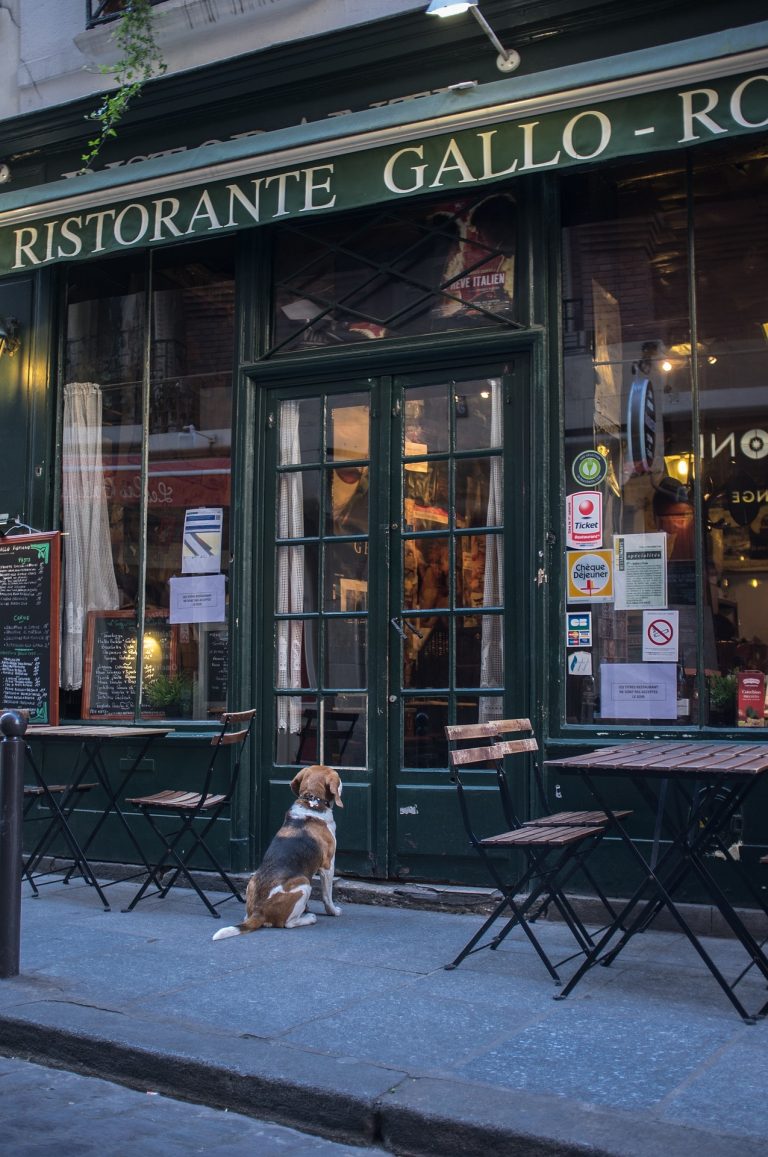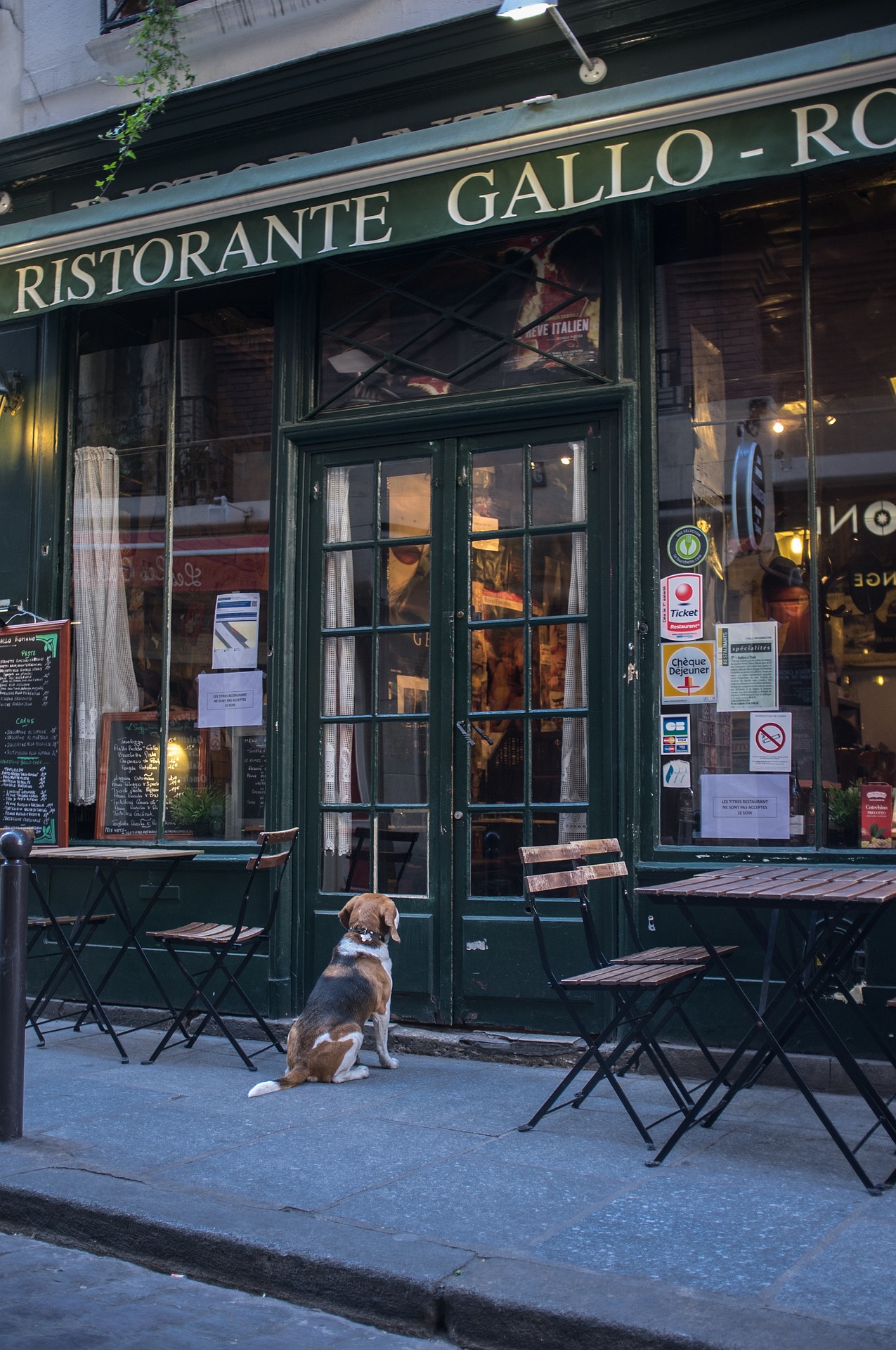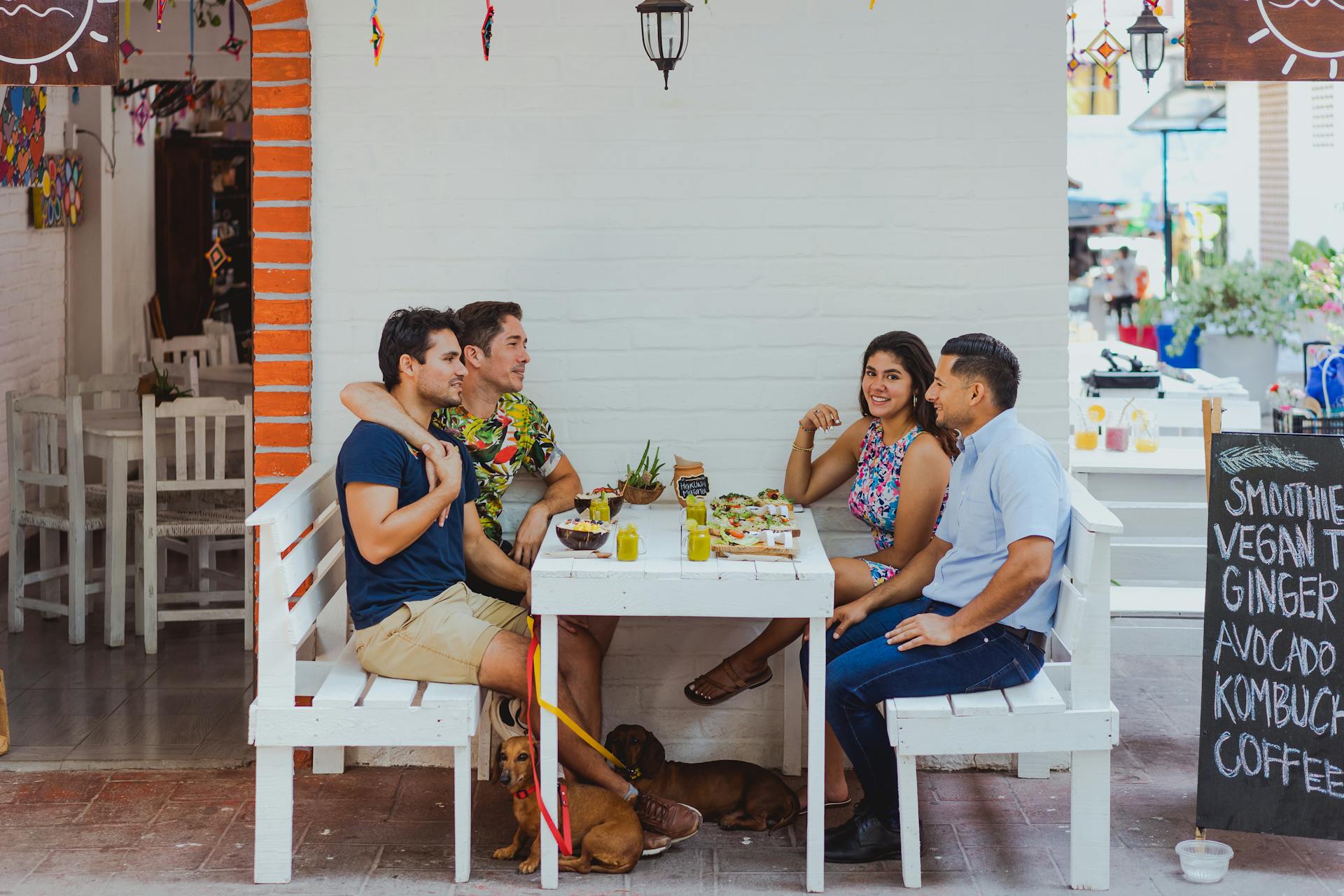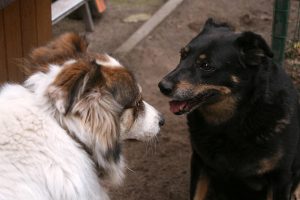Nearly 40% of Italians now bring their pets to restaurants, according to a TheFork survey. The breakdown shows 18% do so frequently and 21% occasionally, with another 10% planning to try it for the first time. Of those who have brought pets to dining establishments, 75% report welcoming experiences.
Italian pet owners have clear priorities. Water bowls rank first at 77%, followed by friendly and knowledgeable staff at 44%. Complimentary pet snacks appeal to 27%, while 20% want dedicated pet menus and another 20% prefer designated pet areas. These preferences provide a blueprint for American restaurants considering similar programs.
The Italian data arrives as US pet ownership reaches 67% of households, approximately 85 million homes. Americans spent $109 billion on pets in the past year, with per-pet spending projected to reach $1,733 annually by 2030, up from $869 in 2019. The total pet market is expected to hit $261 billion by 2030.
The massive US opportunity
Yelp reported a 58% increase in searches for its “Dogs Allowed” restaurant filter between May 2021 and May 2023. Pet travel generates 19 million annual Google searches in the US, and 40% of middle-aged travelers now travel with pets. This search behavior indicates unmet demand rather than satisfied customers.
Pet owners demonstrate measurably different spending patterns. They stay longer at establishments, increasing per-table revenue. They book weekend and holiday reservations that fill capacity during high-demand periods. The 96% of pet owners who consider their pets family members and the 82% who celebrate pet birthdays represent customers actively seeking venues that accommodate their animals.
The revenue opportunity extends beyond direct spending. Pet-friendly establishments generate social media content from customers, receive higher volumes of online reviews, and build community connections that drive repeat visits. Hotels with pet-friendly policies report occupancy rate increases during weekends and holidays, a pattern applicable to restaurants with similar flexibility.
Italy’s 75% positive reception rate demonstrates that pet-friendly policies succeed when executed properly. The trend shows acceleration rather than plateau, with 10% of Italian pet owners planning their first restaurant visit with pets. American restaurants that adapt these proven practices can capture market share before competitors respond.
Understanding US legal framework and regulations
The FDA restricts pets from food preparation, storage, and handling areas. This federal baseline allows state and local jurisdictions to set additional requirements. Restaurant owners must distinguish between service animals, which have legal access under the ADA, and pets, which do not.
Colorado requires signage at establishments that allow pets and, in some jurisdictions, separate entrances for pet areas. These requirements vary by city and county. Restaurant operators need written confirmation from their local health department about outdoor and indoor pet policies before making infrastructure investments.
Liability coverage requires updates when adding pet policies. Business insurance policies written without pet accommodation may not cover animal-related incidents. Documentation requirements include posted pet policies, customer agreements, and staff incident reports. Insurance carriers typically require these elements before extending coverage to pet areas.
Designated pet zones must maintain physical separation from food preparation areas. Posted signage must communicate pet policies clearly. Many establishments require leashes and control measures. Some request proof of vaccinations, though this adds operational complexity. Sanitation protocols in pet areas should exceed baseline health code requirements to maintain inspector confidence and customer trust.
The business case: Calculating your ROI
Access to 85 million pet-owning households creates immediate market expansion. Premium pricing for pet menus and special services adds revenue without cannibalizing existing margins. Extended visit duration translates directly to higher per-table revenue, particularly during off-peak weekday periods when pet owners have scheduling flexibility.
Event hosting generates additional income. Pet birthday parties, adoption events, and breed club meetups fill tables during typically slow periods. These events create recurring revenue as customers return for annual celebrations.
Pet-friendly establishments receive more online reviews because pet owners feel compelled to share experiences that accommodate their animals. Higher review volume improves search rankings and visibility. The emotional connection between customers and pet-welcoming venues drives repeat business at rates that exceed typical customer retention.
Millennials and Gen Z show higher pet ownership rates than previous generations. The “Cat Dad” trend, where young men adopt cats at record rates, represents a demographic shift toward pet companionship. Restaurants that accommodate pets position themselves for this customer base as it ages and gains spending power.
Infrastructure investment occurs once: outdoor furniture, water stations, waste disposal, and flooring upgrades. Ongoing costs include additional cleaning, maintenance, and staff training. Insurance adjustments vary by carrier and coverage level. Marketing and signage represent minimal costs when integrated into existing programs. Revenue from the 67% of households that own pets typically offsets these expenses within the first year of operation.
Designing your pet-friendly space
Outdoor patios and terraces offer the lowest barrier to entry. These spaces already exist at many restaurants and require minimal modification. Weather-resistant furniture, shade structures, and separation from sidewalk traffic create functional pet areas. Colorado’s dedicated pet entrance model provides a template for jurisdictions with similar requirements.
Indoor pet areas demand more planning. Zoning strategies separate pet sections from non-pet sections while maintaining visual connection to the overall dining room. Flooring selection matters: sealed concrete, luxury vinyl plank, and commercial-grade tile clean easily and resist scratching. Ventilation systems must handle increased air circulation needs. Acoustic panels absorb sound without creating visual barriers.
Table spacing in pet areas should exceed standard measurements. An additional 6-12 inches between tables prevents leash tangling and allows pets to settle without contact. This spacing reduces conflict and gives servers clear pathways.
Water stations need multiple locations to prevent crowding. Stainless steel bowls work better than ceramic because they don’t break and clean in dishwashers. Hooks under tables, rated for at least 50 pounds, keep leashes off the floor. Waste disposal stations should include bag dispensers and sealed containers. Properties with outdoor space can designate pet relief areas away from dining zones.
Design elements should prioritize durability and ease of cleaning. Washable chair cushions, if used, need waterproof covers. Strategic table placement avoids bottlenecks at entrances and service stations. Visual separation can include planters, partial walls, or floor level changes that define spaces without isolation. Photo opportunity areas with good lighting and simple backgrounds generate social media content at no cost to the restaurant.
Service innovation: The pet menu revolution
Water service is non-negotiable given the 77% priority rating from Italian pet owners. Fresh water should arrive within two minutes of seating. Simple treat offerings require minimal investment: commercially prepared dog biscuits cost $0.15-0.30 per unit retail. Partnerships with local pet bakeries provide variety without inventory management.
Intermediate pet menus include 3-5 items priced at $3-7. “Puppuccinos” (whipped cream in small cups) cost pennies to produce and photograph well. Birthday treats can be prepared in-house or sourced from bakery partners. Branded amenity bags with a treat and small toy create memorable experiences for $2-4 per unit.
Premium pet dining requires chef involvement and veterinary consultation for nutritional balance. Seasonal menu rotations match human menu changes. Protein sources should avoid common allergens: chicken, beef, and grains cause most pet food sensitivities. Plain proteins like turkey, fish, or lamb work better. Premium ingredients justify pricing at 30-50% of human appetizers.
Service protocols should include immediate water service upon arrival and a pet greeting that acknowledges the animal by name if provided during reservation. Photo offers create social media moments. Pet birthday packages bundle menu items with decorations and treats. Loyalty programs can track pet visits and offer milestone rewards.
Pricing strategy affects perception. Free water is mandatory. Complimentary treats build goodwill at minimal cost. Premium items priced at 30-50% of human appetizers signal quality while remaining accessible. Package deals for celebrations should show clear savings. Staff should mention pet menu options without pressure, allowing customers to initiate purchases.
Setting clear policies and house rules
Pet policies need specific parameters. Size limits, if imposed, should be clearly stated: “pets under 25 pounds” or “no size restrictions” eliminates ambiguity. Breed restrictions create legal complexity and potential discrimination claims. Behavior requirements should focus on observable actions: “must remain leashed,” “must not bark continuously,” “must not approach other tables.”
Health requirements vary by operator risk tolerance. Vaccination verification adds operational burden because staff must review documents. Many establishments rely on posted policies that require current vaccinations but don’t verify. This shifts responsibility to owners while maintaining policy coverage.
The number of pets per party affects space and management. Two pets per table represents a common limit that accommodates couples who own multiple animals. Peak hour restrictions during Friday and Saturday dinner service protect revenue during high-demand periods while allowing pet access during slower times.
Website language should match posted signage. Social media policy statements reach customers before arrival. Reservation systems need flags for pet guests that alert hosts and servers. Menu disclaimers about pet policies prevent confusion. Staff must communicate policies consistently, using the same language across all team members.
Enforcement protocols prevent arbitrary decisions. Warning procedures for minor infractions (brief barking, leash slipping) give owners opportunity to correct behavior. Relocation to different tables solves proximity conflicts. Asking guests to leave should follow documented policy violations and manager approval. Refund policies for incomplete meals due to pet removal should be established before incidents occur.
Service animals receive legal protections that pets do not. Staff must know the two questions permitted under ADA: “Is this a service animal?” and “What task is it trained to perform?” Emotional support animals do not qualify as service animals under federal law, though some state laws differ.
Managing the mixed clientele experience
Seating strategies require advance information. Reservation systems should ask about pets during booking and flag tables accordingly. Hosts can place pet parties near each other, creating informal pet sections that concentrate any noise or activity. Allergic guests receive tables with maximum distance from pet areas.
Visual barriers don’t require walls. Planters with greenery, decorative screens, or changes in floor level define spaces while maintaining open sightlines. Noise management expectations should be realistic: some sound is inevitable, but continuous barking warrants intervention.
Proactive monitoring prevents escalation. Hosts should check pet area tables every 10-15 minutes during the first 30 minutes of seating. This timing catches behavioral issues before they become problems. Servers can alert managers at first signs of tension between tables or pet discomfort. Manager visibility in pet sections reassures all guests that situations are monitored.
Complaint response should begin with listening without defense. Immediate accommodation offers (different table, complimentary item, expedited service) resolve most issues. Compensation guidelines give staff authority to act: managers can typically comp appetizers or drinks without approval. Service recovery includes follow-up contact after the visit to confirm satisfaction.
Pet section customers value the atmosphere and community feeling of dining with other pet owners. Non-pet section customers appreciate quiet and allergy-free environments. Both sections benefit from the inclusive reputation and increased foot traffic. Customer feedback collection through comment cards and follow-up emails identifies policy improvements.
Marketing your pet-friendly restaurant
Google Business Profile allows a “pet-friendly” attribute that appears in search results and maps. This setting takes 30 seconds to activate and immediately increases visibility for relevant searches. Yelp’s “Dogs Allowed” filter saw 58% increased usage, making this designation critical for discovery. TripAdvisor offers similar pet-friendly tags. OpenTable and Resy allow notes in establishment profiles.
Website pet policy pages should answer common questions: What pets are allowed? What areas? What times? What rules? Photos of actual pet guests make policies tangible. This page should link from the homepage footer and main navigation.
Social media strategy should encourage user-generated content through table signage: “Share your photo and tag us.” Pet photo contests with monthly winners generate recurring content. Staff-pet interaction photos show operational commitment. Testimonials from pet owners provide social proof. Hashtags like #dogfriendlydining and #petfriendlyrestaurant connect to existing communities.
Community partnerships extend reach. Local pet stores can display menus or business cards. Veterinary clinics have bulletin boards for community resources. Pet groomers serve the same customer base. Shelter adoption events on weekends fill tables while supporting local causes. Breed club meetups create recurring bookings. Pet influencers with local followings generate exposure for product trades or small fees.
Review strategy requires active encouragement. Table tents can request reviews from satisfied pet owners. QR codes linked to review sites reduce friction. Response to all pet-related reviews, positive or negative, shows engagement. Showcasing five-star reviews on social media and the website builds reputation. Negative feedback needs public response that demonstrates resolution efforts and learning.










